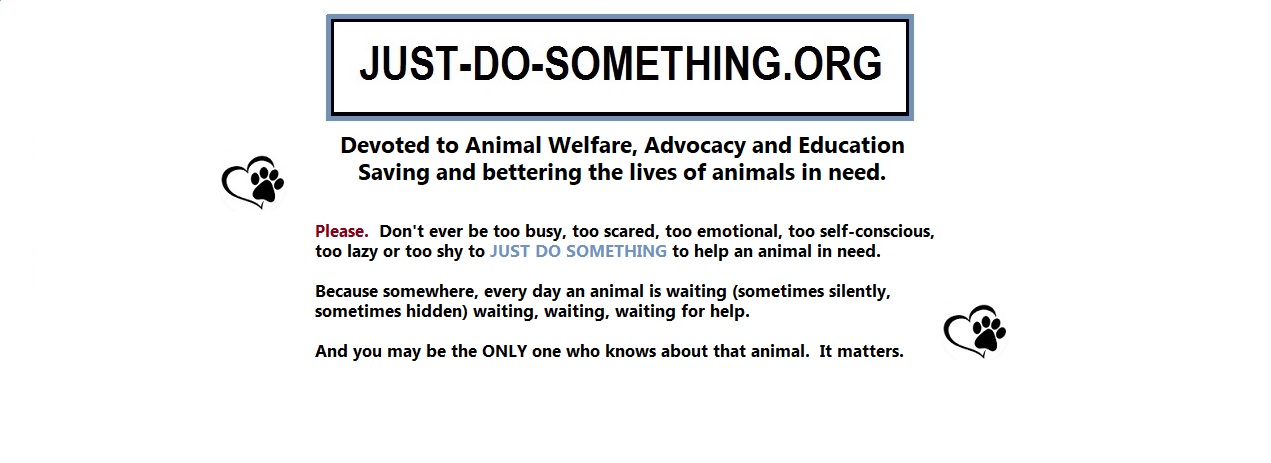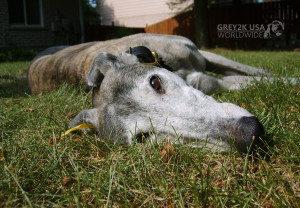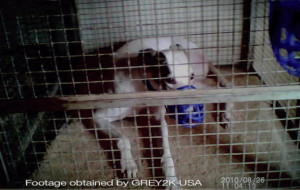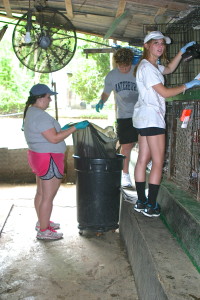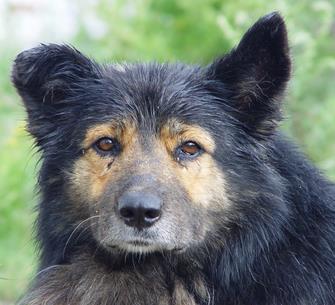Guest Blogger, Richard H. Schwartz, Ph.D.
Before you Comment, take a moment to review our guidelines!
A Dialogue Between A Jewish Vegetarian Activist and a Rabbi
For a long time, I have been trying to start a respectful dialogue in the Jewish community. Because I have had very little success, I am presenting the fictional dialogue below. I hope that many readers will use it as the basis of similar dialogues with local rabbis, educators, and community leaders.
Jewish Vegetarian Activist: Shalom rabbi.
Rabbi: Shalom. Good to see you.
JVA: Rabbi, I have been meaning to speak to you for some time about an issue, but I have hesitated because I know how busy you are, but I think this issue is very important.
Rabbi: Well, that sounds interesting. I am never too busy to consider important issues. What do you have in mind?
JVA: I have been reading a lot recently about the impacts of our diets on our health and the environment and about Jewish teachings related to our diets. I wonder if I can discuss the issues with you and perhaps it can be put on the synagogue’s agenda for further consideration.
Rabbi: I would be happy to discuss this with you. But, I hope that you are aware that Judaism does permit the eating of meat. Some scholars feel that it is obligatory to eat meat on Shabbat and holidays.
JVA: Yes, I recognize that Judaism permits people to eat meat. Jewish vegetarians do not argue that Jews must be vegetarians. We recognize that people have a choice, but we feel that this choice should consider basic Jewish teachings and how animal-based diets and modern intensive livestock agriculture impinge on these teachings. For example, we should recognize the current and increasing tension between the permission to consume animals for human benefit and the extremely cruel treatment they now receive in preparation for such consumption on factory farms, which have become more prevalent in response to population increase and efficiency and cost concerns. With regard to eating meat on Shabbat and holidays, according to the Talmud (T. B. Pesachim 109a), since the destruction of the Temple, Jews are not required to eat meat in order to rejoice on sacred occasions. This view is reinforced in the works Reshit Chochmah and Kerem Shlomo and Rabbi Chizkiah Medini’s Sdei Chemed, which cites many classical sources on the subject. Several Israeli chief rabbis, including Shlomo Goren, late Ashkenazic Chief Rabbi of Israel, and Shear Yashuv Cohen, Ashkenazic Chief Rabbi of Haifa, have been or are vegetarians. Also, Rabbi Jonathan Sacks, Chief Rabbi of the United Kingdom is a vegetarian, as is Rabbi David Rosen, former Chief Rabbi of Ireland.
Rabbi: we also should recognize that there is much in the Torah and the Talmud about which animals are kosher and about the proper way to slaughter animals. So eating meat is certainly not foreign to Judaism.
VJA: Yes, that is certainly true. But, there is also much in the Torah and our other sacred writings that point to vegetarianism as the ideal Jewish diet. For example, as the Torah verse below indicates, God’s initial intention was that people be vegetarians.
And God said: “Behold, I have given you every herb yielding seed which is upon the face of all the earth, and every tree that has seed-yielding fruit — to you it shall be for food.” Genesis 1:29
The foremost Jewish Torah commentator, Rashi, states the following about God’s first dietary plan: “God did not permit Adam and his wife to kill a creature to eat its flesh. Only every green herb were they to all eat together.” Most Torah commentators, including Rabbi Abraham Ibn Ezra, Maimonides, Nachmanides, and Rabbi Joseph Albo, agree with Rashi.
In addition, Rabbi Abraham Isaac Hakohen Kook, first Chief Rabbi of pre-state Israel and a major Jewish 20th century writer and philosopher, believed that the messianic period would also be vegetarian. He based this on Isaiah’s powerful prophecy that “the wolf shall dwell with the lamb, … the lion shall eat straw like the ox…. and no one shall hurt nor destroy in all of God’s holy mountain… (Isaiah 11:6-9). Hence the two idea times in Jewish thought – the Garden of Eden and the messianic period – are vegetarian.
Rabbi: I have to tell you one thing that concerns me. Jews historically have had many problems with some animal rights groups, which have often opposed shechita (ritual slaughter) and advocated its abolishment. Some have even made outrageous comparisons between the Holocaust and the slaughter of animals for food.
JVA: Jews should consider switching to vegetarianism not because of the views of animal rights groups, whether they are hostile to Judaism or not, but because it is the diet most consistent with Jewish teachings. It is the Torah, not animal rights groups, which is the basis for observing how far current animal treatment has strayed from fundamental Jewish values. As Samson Raphael Hirsch stated: “Here you are faced with God’s teaching, which obliges you not only to refrain from inflicting unnecessary pain on any animal, but to help and, when you can, to lessen the pain whenever you see an animal suffering, even through no fault of yours.”
Rabbi: Another concern is with two teachings in Genesis: The Torah teaches that humans are granted dominion over animals (Genesis 1:26) and that only people are created in the Divine Image (Genesis 1:26, 5:1). I fear that vegetarians are promoting a philosophy inconsistent with these Torah teachings, hence potentially reducing the sacredness of human life and the dignity of human beings.
JVA: I think that if we explain how Judaism interprets these important verses, we can go a long way to reduce this potential problem. As you know, Jewish tradition interprets “dominion” as guardianship, or stewardship: we are called upon to be co-workers with God in improving the world. Dominion does not mean that people have the right to wantonly exploit animals, and it certainly does not permit us to breed animals and treat them as machines designed solely to meet human needs. This view is reinforced by the fact that immediately after God gave humankind dominion over animals, He prescribed vegetarian foods as the diet for humans (Genesis 1:29). While the Torah states that only human beings are created “in the Divine Image,” animals are also God’s creatures, possessing sensitivity and the capacity for feeling pain. God is concerned that they are protected and treated with compassion and justice. In fact, the Jewish sages state that to be “created in the Divine Image,” means that people have the capacity to emulate the Divine compassion for all creatures. “As God is compassionate,” they teach, “so you should be compassionate.”
Rabbi: Yes, these are good points, but some vegetarians elevate animals to a level equal to or greater than that of people. This is certainly inconsistent with Judaism.
JVA: Vegetarians’ concern for animals and their refusal to treat them cruelly does not mean that vegetarians regard animals as being equal to people. There are many reasons for being vegetarian other than consideration for animals, including concerns about human health, ecological threats, and the plight of hungry people. Because humans are capable of imagination, rationality, empathy, compassion, and moral choice, we should strive to end the unbelievably cruel conditions under which farm animals are currently raised. This is an issue of sensitivity, not an assertion of equality with the animal kingdom.
Rabbi: Another issue to be considered is that, with all the problems facing humanity today, can we devote much time to consider animals and which diets we should have?
JVA: Vegetarian diets are not beneficial only to animals. They improve human health, help conserve food and other resources, and put less strain on endangered ecosystems. In view of the many threats caused or worsened by today’s intensive livestock agriculture (such as deforestation, global climate change, and rapid species extinction), working to promote vegetarianism may be the most important action that one can take for global sustainability. In addition, a switch toward vegetarianism would reduce the epidemic of heart disease, various types of cancer, and other chronic degenerative diseases that have been strongly linked to the consumption of animal products.
Rabbi: Perhaps I am playing the devil’s advocate here, but by putting vegetarian values ahead of Jewish teachings, aren’t vegetarians, in effect, creating a new religion with values contrary to Jewish teachings.
JVA: Jewish vegetarians are not placing so-called ‘vegetarian values’ above Torah principles but are challenging the Jewish community to apply Judaism’s splendid teachings at every level of our daily lives. Vegetarians argue that Jewish teachings about treating animals with compassion, guarding our health, sharing with hungry people, protecting the environment, conserving natural resources, and seeking peace, are all best applied through vegetarian diets.
Rabbi: What about the Torah teachings about animal sacrifices and that Jews have to eat korban Pesach (the Passover sacrifice) and parts of other animal sacrifices?
JVA: The great Jewish philosopher Maimonides believed that God permitted sacrifices as a concession to the common mode of worship in Biblical times. It was felt that had Moses not instituted the sacrifices, his mission would have failed and Judaism might have disappeared. The Jewish philosopher Abarbanel reinforced Maimonides’ position by citing a midrash (rabbinic teaching) that indicates God tolerated the sacrifices because the Israelites had become accustomed to sacrifices in Egypt, but that He commanded they be offered only in one central sanctuary in order to wean the Jews from idolatrous practices. Rav Kook and others believed that in the Messianic period, human conduct will have improved to such a degree that animal sacrifices will not be necessary to atone for sins. There will only be non-animal sacrifices to express thanks to God.
Rabbi: You have correctly pointed out that Jews must treat animals with compassion. However, the restrictions of shechita minimize the pain to animals in the slaughtering process, and thus fulfill Jewish laws on proper treatment of animals.
JVA: Yes, but can we ignore the cruel treatment of animals on “factory farms” in the many months prior to slaughter. Can we ignore the force-feeding of huge amounts of grain to ducks and geese to produce foie gras, the removal of calves from their mothers shortly after birth to raise them for veal, the killing of over 250 million male chicks immediately after birth at egg-laying hatcheries in the U.S. annually, the placing of hens in cages so small that they can’t raise even one wing, and the many other horrors of modern factory farming?
Rabbi: As a rabbi, I feel that I must point out that if Jews do not eat meat, they will be deprived of the opportunity to fulfill many mitzvot (commandments).
JVA: By not eating meat, Jews are actually fulfilling many mitzvot: showing compassion to animals, protecting health, conserving resources, helping to feed the hungry, and preserving the earth. And by abstaining from meat, Jews reduce the chance of accidentally violating several prohibitions of the Torah, such as mixing meat and milk, eating non-kosher animals, and eating forbidden fats or blood. There are other cases where Torah laws regulate things that God would prefer people not do at all. For example, God wishes people to live in peace, but he provides commandments relating to war, knowing that human beings will quarrel and seek victories over others. Similarly, the Torah laws that restrict taking female captives in wartime are a concession to human weakness. Indeed, the sages go to great lengths to deter people from taking advantage of such dispensations.
Rabbi: Judaism teaches that it is wrong not to take advantage of the pleasurable things that God has put on the earth. Since He put animals on the earth, and it is pleasurable to eat them, is it not wrong to refrain from eating meat?
JVA: Can eating meat be pleasurable to a sensitive person when he or she knows that, as a result, their health is endangered, grain is wasted, the environment is damaged, and animals are being cruelly treated? One can indulge in pleasure without doing harm to living creatures. There are many other cases in Judaism where actions that people may consider pleasurable are forbidden or discouraged – such as the use of tobacco, drinking liquor to excess, having sexual relations out of wedlock, and hunting.
Rabbi: As you know the laws of kashrut (dietary laws) are very important in Judaism. But, a movement by Jews toward vegetarianism would lead to less emphasis on kashrut, and eventually possibly a disregard of these laws.
JVA: I believe that there would be just the opposite effect. In many ways, becoming a vegetarian makes it easier and less expensive to observe the laws of kashrut. This might attract many new adherents to keeping kosher, and eventually to other important Jewish practices. As a vegetarian, one need not be concerned with mixing milchigs (dairy products) with fleichigs (meat products), waiting three or six hours after eating meat before being allowed to eat dairy products, storing four complete sets of dishes (two for regular use and two for Passover use), extra silverware, pots, pans, etc., and many other considerations incumbent upon the non-vegetarian who wishes to observe kashrut.
Rabbi: I must express a concern for the livelihood of some of my congregants and other Jews. If everyone became vegetarian, butchers, shochtim (slaughterers), and others dependent for a living on the consumption of meat would lack work.
JVA: There could be a shift from the production of animal products to that of nutritious vegetarian dishes. In England during World War II, when there was a shortage of meat, butchers relied mainly on the sale of fruits and vegetables. Today, new businesses could sell tofu, miso, felafel, soy burgers, and vegetarian cholent (Sabbath hot dish). Besides, the shift toward vegetarianism will be gradual, providing time for a transition to other jobs. The same kind of question can be asked about other moral issues. What would happen to arms merchants if we had universal peace? What would happen to some doctors and nurses if people took better care of themselves, stopped smoking, improved their diets, and so on? Immoral or inefficient practices should not be supported because some people earn a living in the process.
Rabbi: If vegetarianism solves some problems, doesn’t it create others. For example, if everyone became vegetarian, wouldn’t animals overrun the earth?
JVA: Respectfully, this concern is based on an insufficient understanding of animal behavior. For example, there are millions of turkeys around at Thanksgiving not because they want to help celebrate the holiday, but because farmers breed them for the dinner table. Dairy cows are artificially inseminated annually so that they will constantly produce milk. Before the establishment of modern intensive livestock agriculture, food supply and demand kept animal populations relatively steady. An end to the manipulation of animals’ reproductive tendencies to suit our needs would lead to a decrease, rather than an increase, in the number of animals. We are not overrun by animals that we do not eat, such as lions, elephants, and crocodiles.
Rabbi: Instead of advocating vegetarianism, shouldn’t we alleviate the evils of factory farming so that animals are treated better, less grain is wasted, and less health-harming chemicals are used.
JVA: The breeding of animals is “big business”. Animals are raised the way they are today because it is very profitable. Improving conditions, as suggested by this assertion, would certainly be a step in the right direction, but it has been strongly resisted by the meat industry since it would greatly increase already high prices. Why not abstain from eating meat as a protest against present policies while trying to improve them? Even under the best of conditions, why take the life of a creature of God, “whose tender mercies are over all His creatures” (Psalms 145:9), when it is not necessary for proper nutrition?
Rabbi: If vegetarian diets were best for health, wouldn’t doctors recommend them?
JVA: Unfortunately, while doctors are devoted to the well-being of their patients, many lack information about the basic relationship between food and health, because nutrition is not sufficiently taught at most medical schools. Also, many patients are resistant to making dietary changes. The accepted approach today seems to be to prescribe medications first and, perhaps, recommend a diet change as an afterthought. However, there now seems to be increasing awareness on the part of doctors about the importance of proper nutrition, but the financial power of the beef and dairy lobbies and other groups who gain from the status quo prevents rapid changes. Experts on nutrition, including the American and Canadian dietetic associations stress the many health benefits of plant-centered diets.
Rabbi: some of my congregants would respond: I enjoy eating meat. Why should I give it up?
JVA: If one is solely motivated by what will bring pleasure, perhaps no answer to this question would be acceptable. But, as you well know, Judaism wishes us to be motivated by far more: doing mitzvot, performing good deeds and acts of charity, sanctifying ourselves in the realm of the permissible, helping to feed the hungry, pursuing justice and peace, etc. Even if one is primarily motivated by considerations of pleasure and convenience, the negative health effects of animal-centered diets should be taken into account. One cannot enjoy life when one is not in good health.
Rabbi: Well, I am sure that there are other questions that should be addressed. But I think that you have made the case for at least having a broad discussion of the Jewish and universal issues related to our diets. Why don’t you form a committee with members of different viewpoints and set up a forum at which all of the issues related to our diets can be discussed.
Richard H. Schwartz, Ph.D.
Professor Emeritus, College of Staten Island
Author of Judaism and Vegetarianism, Judaism and Global Survival, Mathematics and Global Survival, and Who Stole My Religion? Revitalizing Judaism and Applying Jewish Values to Help Heal Our Imperiled Planet, and 200 articles at JewishVeg.com/schwartz
President Emeritus, Jewish Vegetarians of North America (www.JewishVeg.
Associate producer of A SACRED DUTY (www.aSacredDuty.com);
“Like” JVNA on Facebook at www.facebook.com/JewishVeg
